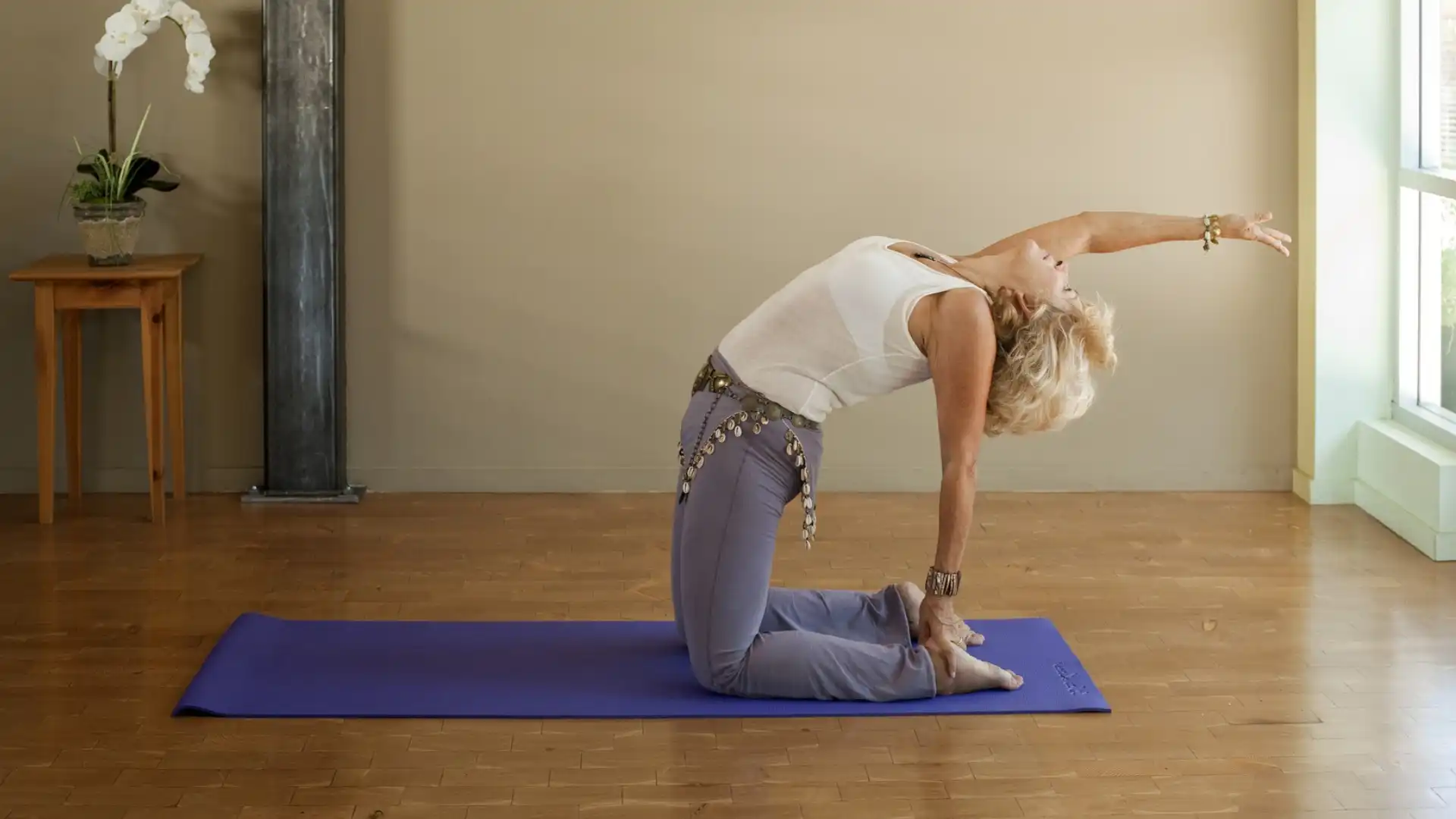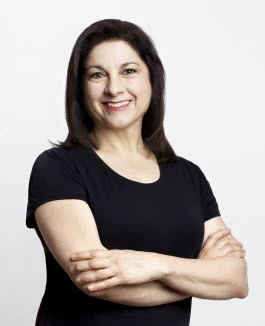Why Do We Lose Mobility Over Time? The Role of Biotensegrity in the Aging Process

We live longer than ever before, but for many, common age-related movement limitations can make it harder to enjoy the same freedom to enjoy all the life has to offer as we did when we were younger. Are there ways to slow the progressive loss of mobility over time, and can yoga play a role in this process? We sat down with author and yoga therapist Doug Keller to get his insights on these questions.
Loss of space within the body is one of the most common reasons why we lose mobility over time, explains Doug Keller.
“The whole network of connective tissue, the fascia, is a tensegrity structure that actually holds the bones away from each other while allowing for movement,” explains Doug. “Movement limitations arise when there’s a breakdown in that system. If the fascia or soft tissues get overly tight or too weak it affects the balance of the tensegrity structure. This in turn decreases the space between the bones. And once the bones start to rub together, the cartilage slowly deteriorates and the result is loss of mobility and arthritis.”
Lack of adequate movement, often as a result of the inflammatory response to the breakdown of tissue, is another common cause of loss of mobility. “The fascia is the first line of immune system defense for removing toxins and maintaining our immunity, even before the lymphatic system kicks in.” Doug explains.
“The fascial system doesn’t have a circulation system like blood or a heart to pump waste products out; It functions through movement. As space narrows and bones rub together, inflammatory conditions such as osteoarthritis and deterioration of the structures in the body occurs.”
When ligaments, cartilage, and joint capsules are degraded by diminished space, chronic movement-based pain can result. With it, limitations in performing the activities of daily living start to creep in. At that point, the risk of falling into what doctors call the Cycle of Pain rises.
Yoga Helps to Break the Cycle of Chronic Pain
In the Cycle of Chronic Pain, the painful movement becomes something to be avoided. Movement avoidance leads to decreased circulation, further inflammation, loss of strength and conditioning in the muscles, and additional joint degradation.
 Fatigue, sleep disturbances, social isolation and more avoidance behaviors follow, and all of these factors short circuit the process by which the body heals itself. This is particularly true of older people who are likely to be more sedentary and less mobile in general.
Fatigue, sleep disturbances, social isolation and more avoidance behaviors follow, and all of these factors short circuit the process by which the body heals itself. This is particularly true of older people who are likely to be more sedentary and less mobile in general.
How to break the cycle? Movement–especially a breath-based movement such as yoga.
Doug advises maintaining integrity, lubrication, and mobility of our joints as we age, but not just with movement alone. It’s important to incorporate a wide variety of movements that take the joints into healthy range-of-motion and preserve space throughout the body.
Here is where the breath-based, multi-dimensional nature of a yoga practice really shines.
“The nice thing about a yoga practice is that we don’t have to aspire to extreme ranges of motion. Yoga practice takes you through every possible plane of movement in the body, which keeps the joints healthy, nourishes the fascial system, and maintains sufficient muscle strength to maintain the space between the bones, thereby reducing age-related problems like osteoarthritis and basic joint deteriorations,” Doug informs.
Emerging science backs him up.
In a study of subjects with knee osteoarthritis Sharon Kolasinski, MD, a professor of clinical medicine and a rheumatologist at the University of Pennsylvania found that those who took 90-minute, modified Iyengar yoga classes once a week for eight weeks reported significant reductions in pain and improvements in physical function, as well as noticeable improvements in joint stiffness.
“Yoga is definitely one option for people with arthritis. Not only for the exercise benefits, but it’s also beneficial in the mind/body area, promoting relaxation and stress reduction,” says Dr. Kolasinksi.
To face the aging process with equanimity and grace, Doug offers a few yoga-based tips:
Brahmacharya (Moderation): Tread Lightly In Practice
The Hatha Yoga Pradipika warns against doing too much yoga, cautioning that too much effort destroys the yoga. Instead of doing more, our practice should be mindful of whether we are choosing practices that support our continued health and well-being.
Doug advises his clients to work within a healthy range that reflects their specific level of conditioning and joint health. “The central purpose of asana practice is to maintain the integrity of the whole fascial system in order to maintain the health of the body on every level – organic, circulation, lymphatic, everything. This is what the yogis termed Prana,” he notes.
“We tend to get overzealous, thinking if one is good, then two must be better and then why not ten?,” Doug muses. “And so, more and deeper and harder is better. It’s easy then to lose a sense of the right purpose of the practice, which is to be more self-aware. Are you doing it in a way that’s beneficial to you or not?”
Ahimsa (Non-Violence): Create Healthy Space By Moving Mindfully
Yoga is a practice of listening closely to the body and learning how to move in a way that makes us feel healthy and alive, and to experience well-being, according to Doug.
“We tell our students to listen to their bodies. But the truth is, we don’t always know how to do that. The practice has to be a step by step reconnection where you learn to listen–to yourself even more than to the teacher. We have to ask ourselves, ‘Is it yoga that’s hurting me or my misunderstanding of yoga and my attitude towards it that’s hurting me?’”
The practices we choose should reflect our unique circumstances, body weight, lifestyle, diet, and so on. At the same time movement is the vehicle by which the body burns inflammation-causing waste products, such as lactic acid. So movement is important, but so is a recognition of our needs and physical limitations.
Doug points out that osteoarthritis in the knees, for example, can be a product of both too many super deep squats which exaggerate knee flexion, and too much extension (locking) of the knees and the hypermobility that comes with it. Striking the correct balance from the feet up is key.
Samskara (Habit and Past Action): Find the Sweet Spot Between Lengthening and Strengthening
A practice based on tensegrity should involve a healthy balance between strengthening and lengthening, in order to reconnect to our sense of being in the body. Doug notes that most of the nerves in our body are located within the fascia where messages of both where the body is in space (proprioception) and also messages of pain (nociception) are transmitted to the brain. In working therapeutically with his own clients, he starts by observing their posture and movement patterns in order raise their self-awareness.
“Self-awareness is the first step because the body is a self-correcting and self-healing mechanism. To shift behavior, we must first raise consciousness and self-awareness. So often, we’re distracted by other goals or other purposes that we cease to listen. Then you’re kind of pulling the plug on your body’s own system of self-healing.”
Tapas (Self-Discipline): Defy Gravity
Sad but true, aging is an ongoing battle with gravity and the natural tendency is to surrender to stooped posture and weak muscle tone.
“Gravity is there for our health because against the force of gravity, we actually have this sort of rebounding action of the body. When you tell somebody to stand up tall, they’re actually activating muscles against the pull of gravity in a way that keeps the body healthy,” Doug advises.
“But as we cease to keep this in mind, we kind of fall to the forces of gravity and we lose that sort of bounciness that we associate with youth when we were naturally more active. Over time as we get tired or emotional factors come in. We just give up a little bit, which is unfortunate because we don’t have to.”
Is Yoga A Fountain of Youth?
Doug doesn’t make promises about how much a yoga practice can help fend off the effects of aging. But he believes it’s reasonable to expect improved muscle tone, more facile movement patterns, increased muscle flexibility, and a healthier fascial system. And perhaps most importantly, movement makes us feel better.
“The times you feel the worst, if you get up and go out for a walk and do something–as much as you don’t feel like it–in the end you’re glad for having done it because so much else is going on in the body beyond what’s simply happening on a muscular or structural level. All of that influences how you feel inside, too, and how the body responds. So while the body’s always going through some process of deterioration, the question is how much are you supporting the processes by which the body renews itself,” he explains.
“Once again, the range of possibilities start to decrease with age but they don’t narrow down to nothing. And we see plenty of examples of people that have maintained movement until late in life and remained healthy and active through their aging years.”
Source:
https://www.arthritis.org/living-with-arthritis/exercise/workouts/yoga/yoga-benefits.php
 Lynn Crimando, MA serves as the teaching mentor for YogaUOnline’s Wellness Educator Program. She is a yoga teacher, C-IAYT Yoga Therapist, board-certified Health and Wellness Coach, and a Buteyko Practitioner. She has a private practice in New York City and teaches classes throughout the city on behalf of Health Advocates for Older People. In addition, Lynn is on the faculty of the IAYT-approved Yoga Polarity Therapist Training in Malverne, New York. To learn more about Lynn, visit her website: yogalynn.com.
Lynn Crimando, MA serves as the teaching mentor for YogaUOnline’s Wellness Educator Program. She is a yoga teacher, C-IAYT Yoga Therapist, board-certified Health and Wellness Coach, and a Buteyko Practitioner. She has a private practice in New York City and teaches classes throughout the city on behalf of Health Advocates for Older People. In addition, Lynn is on the faculty of the IAYT-approved Yoga Polarity Therapist Training in Malverne, New York. To learn more about Lynn, visit her website: yogalynn.com.




